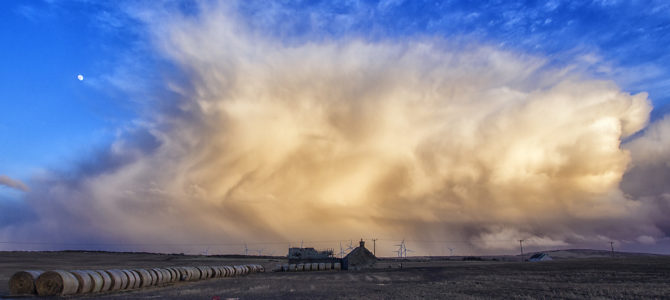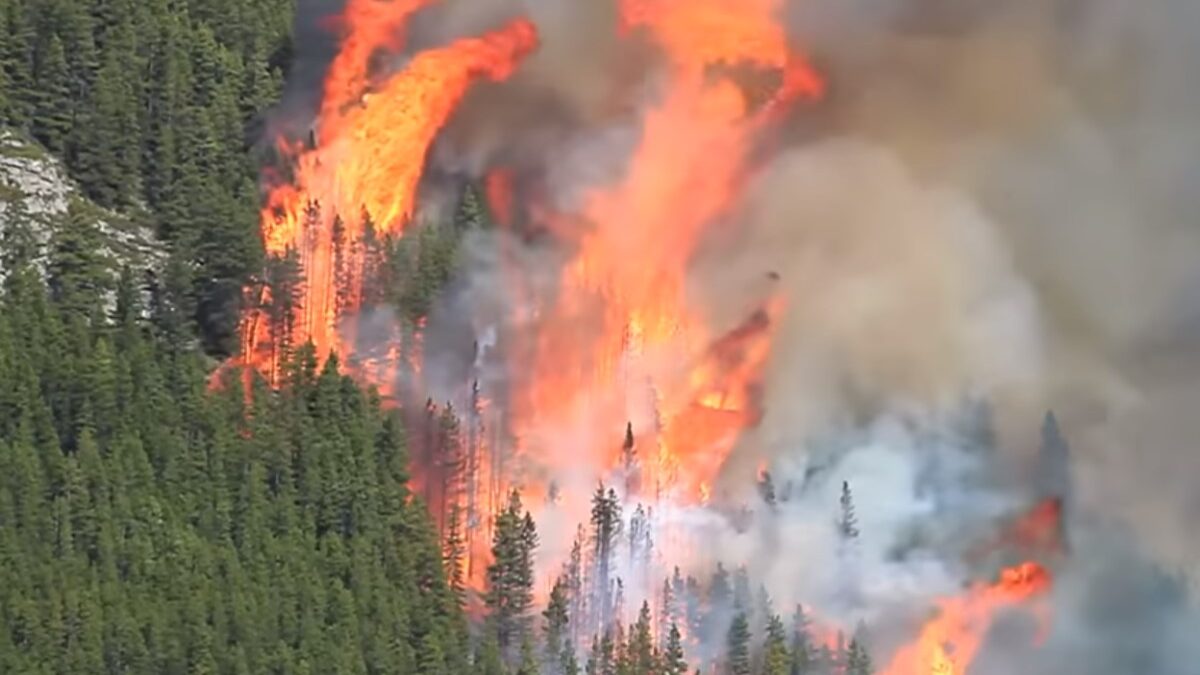
This week, on the Eastern seaboard, there was wind. There was a lot of wind. Not enough to qualify as a hurricane, but the gusts were pretty gusty, lots of trees down and power lines snaking around neighborhoods like foreboding industrial cobras. I could hear the storm whipping around the house as I lay on the couch, cozy in the blue light of my iPhone, fighting with strangers on Twitter.
After the storm, I was lucky enough to wake to no damage, safe children, and power. I also woke to find out this kind of wind has a ridiculous name — a sting jet. Okay. “Sting jet?” Really now. Really.
Coming on the heels of the “bomb cyclone” in January, I was incredulous. Before that it was “polar vortex” and giving snowstorms names. Tornadoes a la izquierda and cyclones a la “derecho,” and here I am, stuck in the middle with you.
Surely these new-fangled terms for, ahem, wind and snow and storms are just media creations meant to hype every weather event to give us a sense of impending doom, which leads to increased ratings. The Acela corridor is probably just assigning new and special names to normal weather phenomena because “we are experiencing the average wind speed of the plains states in January” doesn’t sound that spectacular. But “sting jet” in Manhattan? C’est magnifique!
A snowstorm isn’t just a snowstorm. It’s a bomb cyclone because the narcissism of the Northeast is served by this apocalyptic nomenclature, right? Even a snowstorm that can’t be called anything explosive has to be called Cruz or Ruby or some such because we can’t even have a simple weather event without a hipster name anymore.
I was going to rant about this phenomenon. Except then I made the fatal error of any writer of the internet age — I did a modicum of research and it turns out I was wrong. These are apparently real things.
And they’re not even new! It turns out meteorologists have been coming up with rad names for things since the 1800s and totally holding out on us.
Let’s start with the “sting jet,” among the newest of these terms and the one most recently in use.
This week’s wind storms featured a “sting jet,” which is a real meteorological phenomenon discovered in a study of a famous 1987 storm in Britain and France. Known as “The Great Storm,” its high winds of up to 115 mph resulted in the loss of millions of trees, property damage, and more than 20 deaths.
The “sting jet” was discovered and named in a 2004 study of The Great Storm, writes Keith Brownin, a meteorology professor at the University of Reading:
Fifteen years ago the existence of sting jets was unknown. But since then various scientists, including myself, have studied them and we are beginning to understand them better.
… it was exciting to find this new feature, which wasn’t just a more severe version of the things we knew about but, rather, was different in kind and not just in degree. The first step of course was to identify that such a phenomenon exists: this came about as a result of an especially detailed analysis of the October 1987 storm which was published in 2004. Important clues pointing to the existence of the new phenomenon were provided by satellite cloud imagery. The strongest winds were seen to emerge at the tip of a hook of cloud curving around the cyclone centre, much like a scorpion’s sting is found at the end of its curved tail. We therefore named it a “sting jet”.
Up next we have “bomb cyclone.” That one’s gotta be fake, right? Wrong.
Meteorologists of the ‘40s and ‘50s started calling certain weather events that formed quickly over water bodies, “bombs.” That’s the colloquial and very cool term we now use for a phenomenon more technically known as “explosive cyclogenesis.” “Bombogenesis” is another actual real term for this thing. I’m not kidding. They can have hurricane-force winds, but aren’t technically hurricanes. There are requirements:
Today, a bomb cyclone is an extratropical area of low pressure in which the central barometric pressure drops at least 24 millibars in 24 hours. Some storms have intensified as rapidly as 60 millibars in a 24 hour period.
Okay, but polar vortex. That one cannot be for real. Au contraire.
The term “polar vortex” first made its appearance in a journal edited by none other than Charles Dickens in 1853. This according to linguist Ben Zimmer writing for the Wall Street Journal in 2014: [The writer] described how a current would enter the polar region and would be “whirled about the pole in a continued circular gale… at last reaching the great polar vortex,” and “the current would be carried upward into the atmosphere before continuing its cyclical journey.”
Now, not every icy blast is a polar vortex, and as this term has moved from meteorology to media, it has at times been misused and abused to describe many more wintery events than warrant this badass name.
Surely “derecho” is new and fake.
Wrong again! This is the realest yet!
This term for a straight swath of strong, sustained wind comes from the Spanish word for “direct.” It can have tornado-strength winds, and do just as much damage, but it doesn’t spin, hence the name, according to the National Oceanic and Atmospheric Association.
The term was first used in the 1880s by German immigrant Gustavus Detlef Hinrichs, who discovered the phenomenon during his work as the head of the Iowa Weather Service.
In the end much to my dismay, my intended rant is mostly moot. Though we should watch out for misuse and overuse of these terms just to hype normal storms, they are real terms, sometimes with long histories within meteorological circles. As long as they’re not abused, the terms are giving us more insight and precision in understanding weather than we had before.
But we should stop naming regular snowstorms. That’s just silliness. Sorry, winter storms Declan and Clementine. You have been downgraded to “storm.” Bomb cyclone and sting jet, you can stay.









